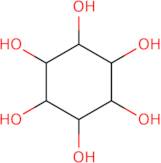myo-Inositol
CAS: 87-89-8
Ref. 3D-MI06864
| 1kg | Discontinued | ||
| 2kg | Discontinued | ||
| 5kg | Discontinued | ||
| 10kg | Discontinued | ||
| 25kg | Discontinued | ||
| 500g | Discontinued | ||
| 200kg | Discontinued |
Product Information
- meso-InositolMyoinositol
- Bios I
- Cyclohexanehexol
- Cyclohexitol
- Dambose
- Freeda
- Inocitol
- Inosital
- Inosite
- Inositene
- See more synonyms
- Inositina
- Inositol
- Inositol, myo-
- MI
- Meat sugar
- Mesoinosit
- Mesoinosite
- Mesoinositol
- Mesol
- Mesovit
- Mio-Inositol
- Mouse antialopecia factor
- Myoinosite
- Myoinositol
- Nucite
- Phaseomannite
- Phaseomannitol
- Rat antispectacled eye factor
- Scyllite
- cis-1,2,3,5-trans-4,6-Cyclohexanehexol
- i-Inositol
- iso-Inositol
- meso-Inositol
- myo-Inosit
Myo-inositol is an important component of the phosphatidylinositol family, which is a major component of cell membranes. Myo-inositol is found in high concentrations in the human brain and has been shown to be involved in a number of cellular processes such as signal transduction, protein synthesis, and gene expression. It also has been shown to inhibit the growth of ovarian cancer cells. This drug inhibits the release of calcium from intracellular stores by binding to the cytosolic Ca2+ channels and inhibiting their activity. Myo-inositol also binds to guanine nucleotide-binding proteins and inhibits polymerase chain reactions. The analytical method for myo-inositol involves measuring its concentration using p-nitrophenyl phosphate (PNPP) as a substrate in an enzymatic reaction that produces PNP.





